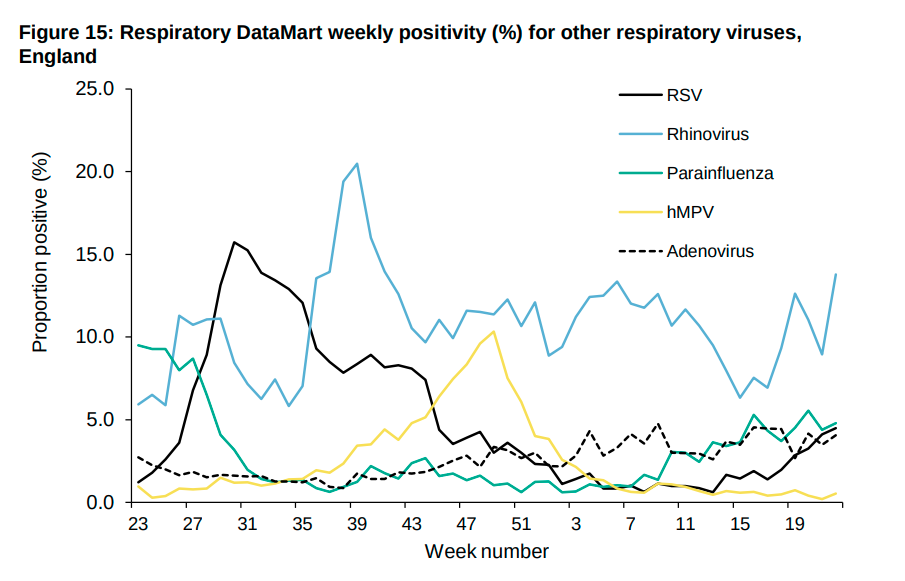A MEDIC has warned that kids are being hit by three viruses at a time, as experts say the Covid pandemic has wiped their immunity to bugs.
Two years of stay-at-home orders has meant their defences against illnesses are lower than what would be expected for their age, experts say.

In the UK, viruses that tend to peak in the winter months are on the rise despite temperatures heating up.
The unusual patterns were also seen last summer, but appear to have continued despite Covid largely fizzling out.
In the US, doctors at Yale New Haven Children’s Hospital say children were being admitted in May with a startling range of seven respiratory viruses.
The coronavirus is being blamed for the phenomenon.
Read more on kids' health
“That’s not typical for any time of year and certainly not typical in May and June,” Thomas Murray, an infection-control expert and associate professor of paediatrics at Yale, told the Washington Post.
Some children admitted to the hospital were co-infected with two viruses and a few with three, he said.
Prof Will Irving, a professor of virology at University of Nottingham who works in a diagnostic lab, said it was not unusual for children with cold symptoms to test positive for a number of viruses at once.
However, it is the combination of bugs that is bizarre – he said tests that would normally be limited to winter are being used in the summer months, too.
He told Trending In The News: “In the laboratory, we know that we need to process samples for this range of respiratory viruses now.
“Although in previous summers, we might not have done all the tests because we just don’t see flu in the summer, for instance.
“We’re including flu and RSV and in all of our respiratory tests [at Queens Medical Centre, Nottingham].”
For decades, doctors have relied on cyclical surges of viruses to diagnose patients – but are now having to adjust protocols.
Peter Hotez, a molecular virologist and dean for the National School of Tropical Medicine at Baylor College of Medicine in Houston, told The Post: “You would see a child with a febrile illness, and think, ‘What time of the year is it?’”
‘Unusual phenomenon’
In the UK, a flurry of infections caused by the viruses RSV, parainfluenza and adenovirus are unexpected for this time of year.
Prof Irving said the “normal circulatory patterns of these viruses have clearly been impacted by [Covid] measures”.
He said: “The fundamental biological behaviour of the virus hasn’t altered. It affected the human population that the viruses infect.
“For the last two years, one, two and three year olds have been to a large extent protected from the circulation of these viruses because the lockdown has cut down the circulation.
“So they’ve not been exposed to what otherwise would have been routine, relatively trivial virus infections that young children get.
“We’ve never done that before in our lifetimes or and we don’t know what effect that has had on the immunity of these children.”
He said although children’s immune system “hasn’t been trained properly”, there does not appear to be an increase in severity of disease.
RSV, a common cold that in very few babies can be life-threatening, traditionally limits its assaults to the late autumn to spring, peaking in the cold winter months.
But, surprising health officials, it surged last summer, fell flat over the winter, and is now picking up again.
Positivity (an indication of prevalence) reached 4.5 per cent in early June, according to UK Health and Security data.
The highest positivity is in the under 5 year olds at 15.2 per cent.
Prof Irving said: “We could predict that RSV would appear in about November, and it would disappear about mid-February, and that would happen every single year.”
Rhinovirus infections peak in September to November, and again in the spring from March to May.
But incidence dropped during March this year, was at its lowest in April, and is now on the way up, currently at 13.8 per cent.
Adenovirus infections, such as tonsillitis and tummy bugs, tend to peak in the winter and early spring.
Cases have been on a slow, upward trend since the autumn, and positivity is now at 4.1 per cent, with the highest positivity in under 5 year olds at 8.5 per cent.
The bug is being investigated as the cause of a mysterious increase in liver inflammation in children (hepatitis).
“It’s an unusual phenomenon,” Prof Irving said.
“We may or may not ever discover why it happens. But it’s got to be more than a coincidence that has happened after two years of pandemic.”
Meanwhile, flu practically vanished over the past two winters.
Prof Irving said cases were coming in to Queen Mary’s hospital in August, which was “extraordinary”.
Read More on Trending In The News
“I’m somewhat anxious for influenza that it will come back, and it will come back in a big way. And presumably it’ll come back some time this coming winter.
“Australia, which is in its winter at the moment, and they have seen a huge rise in influenza cases. I’m sure that will be repeated in the northern hemisphere.”












